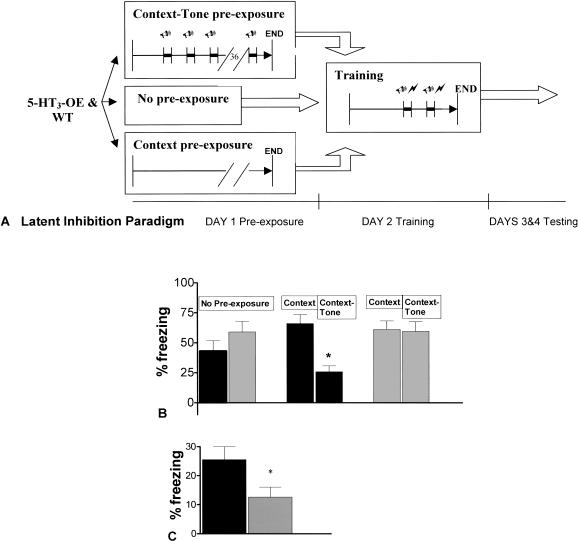Figure 5.
Latent inhibition to the tone is enhanced in 5-HT3-OE mice, whereas contextual conditioning remains elevated. (A) Day 1 pre-exposure: Mice in the context-tone pre-exposure group received 40 presentations of a 5-sec tone (80-db, 6-Hz clicker, intertrial interval 30 sec). Mice in the no pre-exposure group remained in their home cages. Mice in the context pre-exposure group were placed in the training chamber for the same amount of time (23 min, 50 sec) as the context-tone group but received no exposure to the tone. Day 2 training: After 90 sec of habituation, the tone was presented for 5 sec and a footshock (0.6 mA) was delivered through the stainless steel grid floor for the last 2 sec of the tone. Thirty sec after the first footshock, the tone and footshock sequence was repeated and mice were removed from the context 30 sec after co-termination of the second tone/shock pairing. Day 3 testing: Mice were tested for freezing to the tone. Day 4 testing: Mice were tested for freezing to the context. (B) Conditioned responding to the tone. Data are mean ± SEM. Black bars, 5-HT3-OE; gray bars, WT. *: A significant difference at P = 0.05 for a genotype × pre-exposure interaction. (C) Conditioned responding to the context. Data are mean ± SEM. Black bar, 5-HT3-OE; gray bar, WT. *: P = 0.02.

